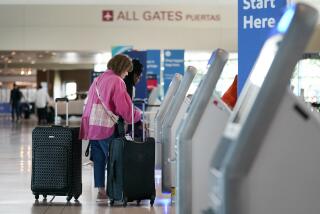Are you paying too much for travel insurance?

Thereâs a rule of thumb when it comes to buying travel insurance: âBuy the least expensive policy that fits your needs,â says Jenna Hummer of online retailer Squaremouth. Itâs not like wine, where the higher the price, the better the bottle.
How do you know if you are paying too much?
Experts say travelers should consider cost and coverage when choosing a plan. That means make sure you are covered for costs you would expect to be reimbursed for if things go wrong (such as airfares, cruises, tours, hotels, etc.), and not choosing coverage you may not need (such as cancel-for-any-reason insurance, which sounds so comforting but can be so pricey).
How much does a standard travel insurance policy cost?
Generally, expect to pay 5% to 10% of your prepaid, nonrefundable travel costs for a standard plan that will refund 100% of your money. You can also insure individual parts of your trip, say, just airfare and hotels or buy only medical insurance.
Squaremouth customers this year paid an average $249 for policies.
And donât expect to find a deal on travel insurance. âTravel insurance is highly regulated, and it is illegal to offer a discount on policies,â Squaremouthâs website says.
What costs are reimbursed if something happens?
With a standard plan, you are covered 100% for trip cancellation or interruption; medical expenses and evacuations (essential for overseas travelers whose stateside plans, such as Medicare, donât cover them abroad); lost or delayed luggage; and canceled or delayed flights.
You need to read the fine print to make sure you understand when and how coverage kicks in. For example, trip cancellation reimburses the full trip cost if you, or your companions or family members, become ill or injured and in case someone dies. But you wonât get reimbursed if you decide you donât want to go (thatâs the cancel-for-any-reason upgrade) or if your reason isnât covered in the plan.
Also medical evacuation, for example, kicks in when you become seriously ill or injured (and covers transporting remains too), not just because youâre feeling anxious about severe weather or civil unrest at your vacation destination.
Payouts for lost or damaged luggage usually are capped at $250 to $500 per bag. (If you are bringing more expensive items, add them to your homeowners insurance.) You can add family members, or groups of 10 or more, to one policy too.
One tip: If things go wrong, save police reports, luggage receipts, receipts for meals and hotel stays, etc. You will need to present the paperwork to your insurer to make a claim.
When should you buy?
Letâs get the silliness out of the way. You canât buy travel insurance if youâre standing in the middle of a 140-mph hurricane on vacation. If a hurricane strikes your destination, you would be reimbursed if you had been insured beforehand and if the hurricane had been named by the World Meteorological Organization.
â[Coverage] has to represent the amount of money you would lose if you prepaid for the trip, to make you economically whole,â says Stan Sandberg, cofounder of TravelInsurance.com.
The earlier you buy, the earlier you are covered, particularly if things go wrong long before you leave for your trip.
Travelers may upgrade their policy for more flexibility. And though cancel-for-any-reason coverage sounds great, youâll pay about 40% to 50% more in premiums and receive at most 75% of your costs if you cancel.
Also, for this type of coverage, you usually have to buy a policy within 21 days of putting down money on your trip and have to cancel at least 48 hours ahead of time.
Should you ever buy policies offered when youâre buying a cruise or airline ticket?
It depends on what the airline or cruise company plan says, but itâs usually presented as a choice thatâs âvery binary, take it or leave it,â Sandberg says. âYou buy now, and thatâs all you get.â
And it could leave you underinsured, if the policy offered on an airlineâs site covers only the cost of airfare and nothing else. Ditto for cruise lines.
Experts say travelers usually can do better by shopping around and comparing policies by whatâs covered and what they cost. After that, look for insurers that receive an A.M. Best credit rating, which means the company has been financially vetted, Hummer says.
You may want to start your comparative search at a travel aggregator website, such as Squaremouth.com, InsureMyTrip.com and TravelInsurance.com. These sites provide lots of information and FAQs about how to choose, explain what coverage terms mean, and, if you wind up buying through their site, can help mediate if you have a problem collecting from an insurer.
More to Read
Sign up for The Wild
Weâll help you find the best places to hike, bike and run, as well as the perfect silent spots for meditation and yoga.
You may occasionally receive promotional content from the Los Angeles Times.







